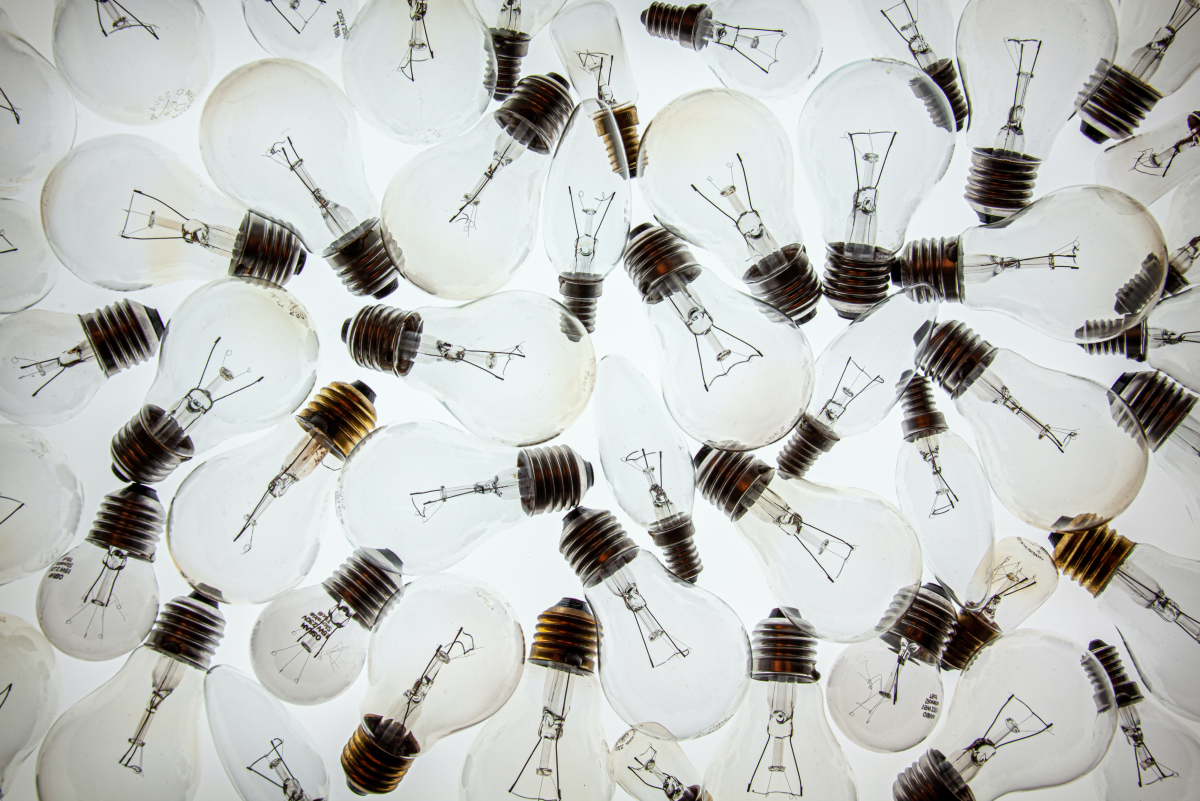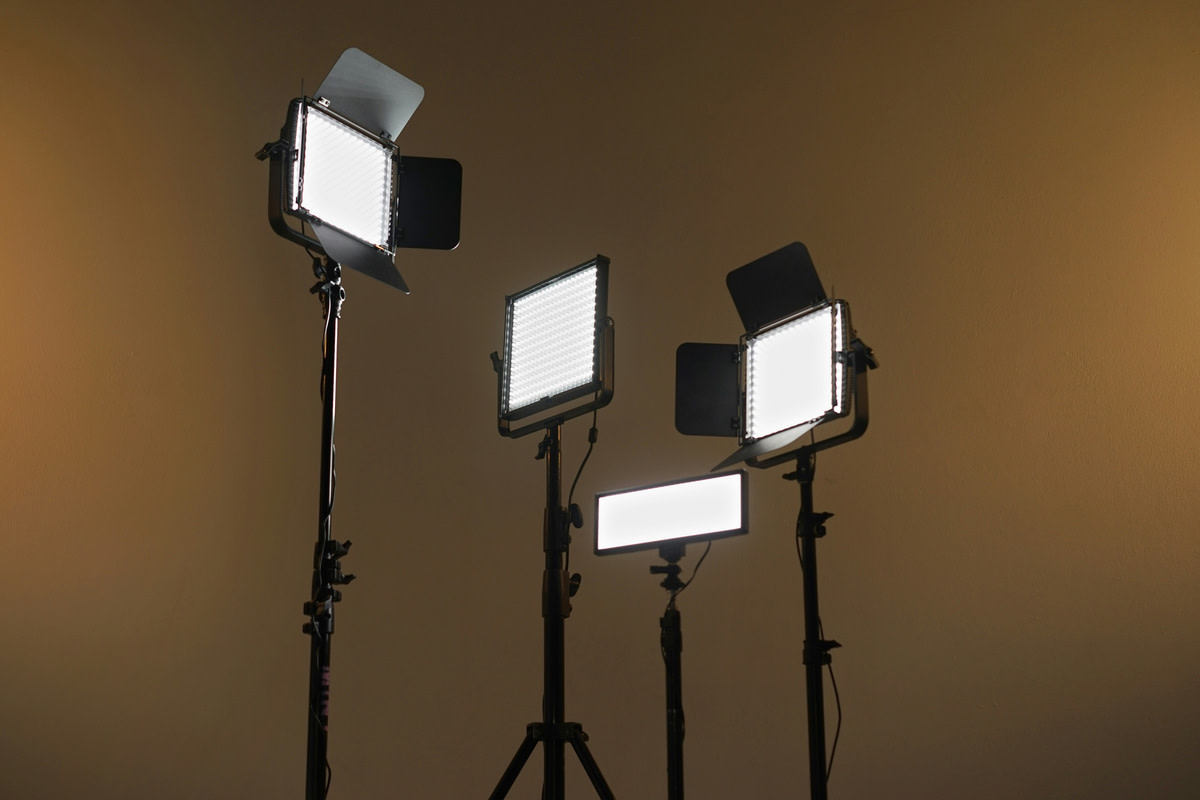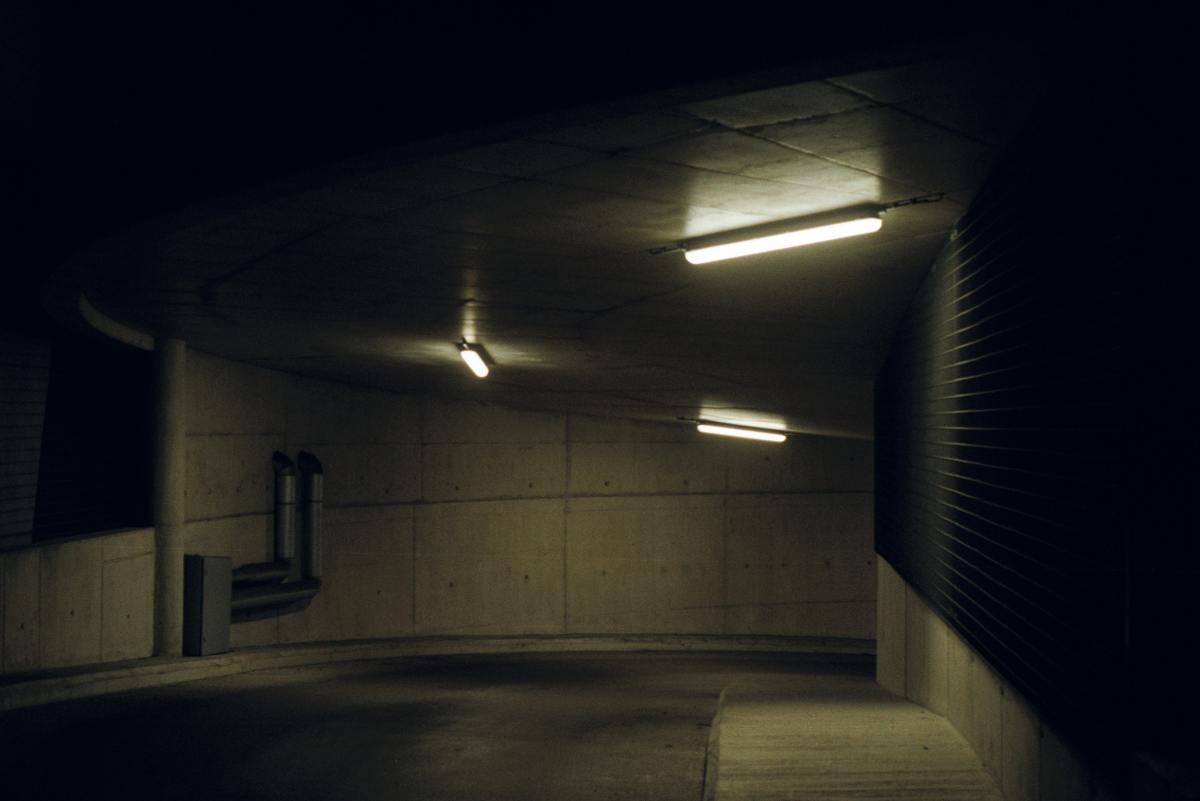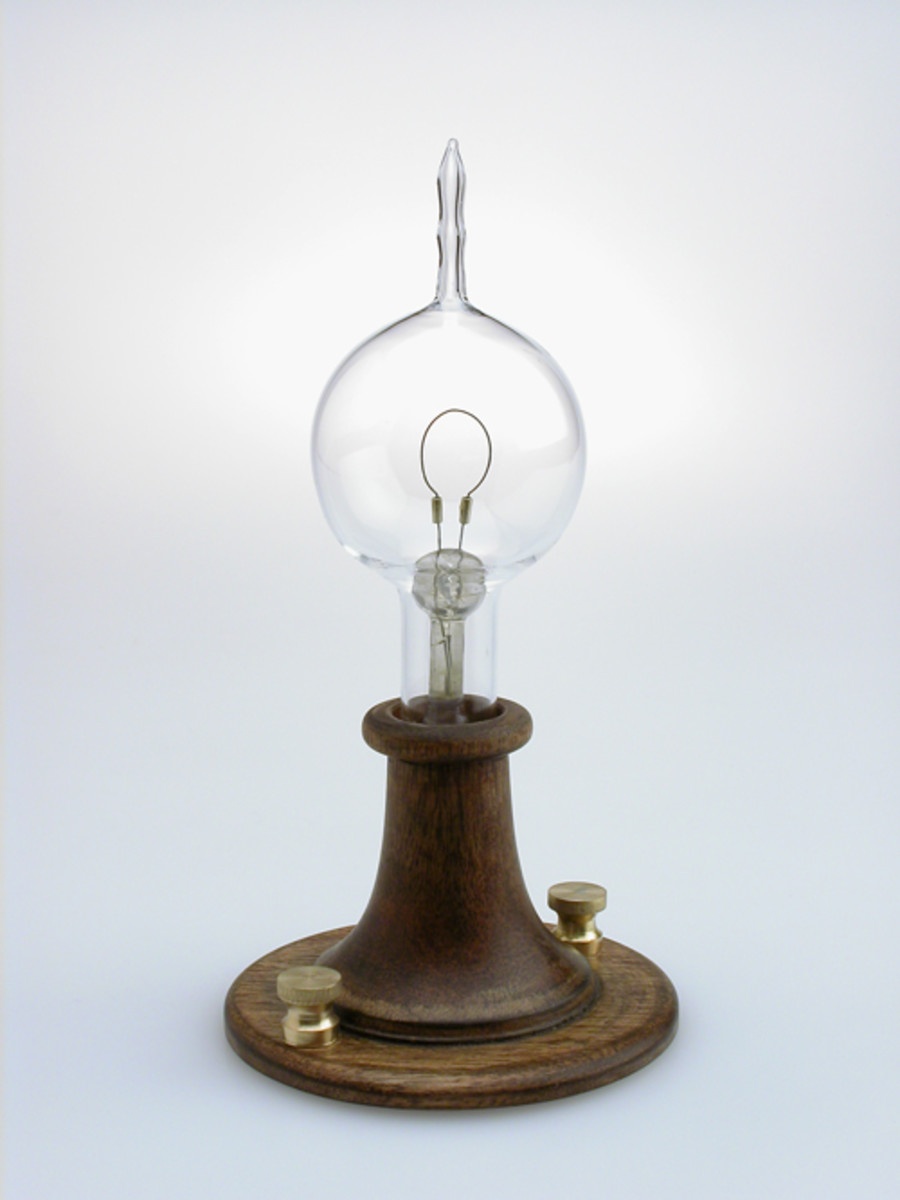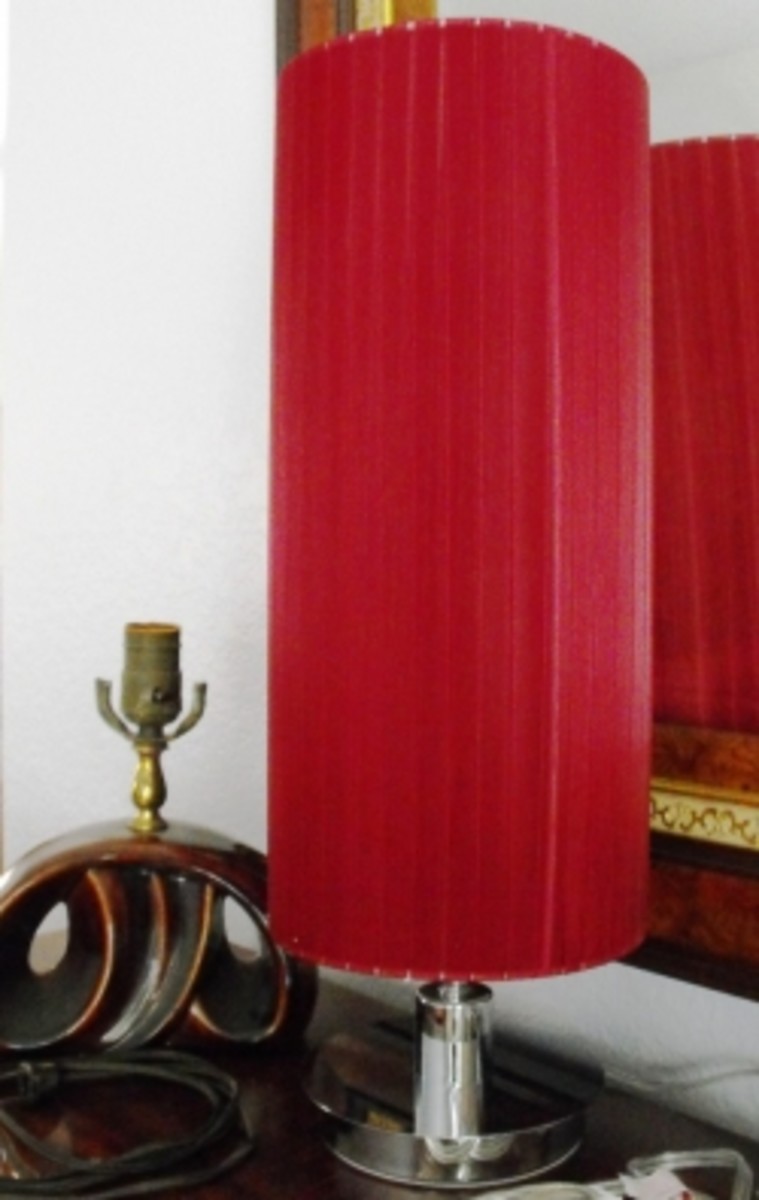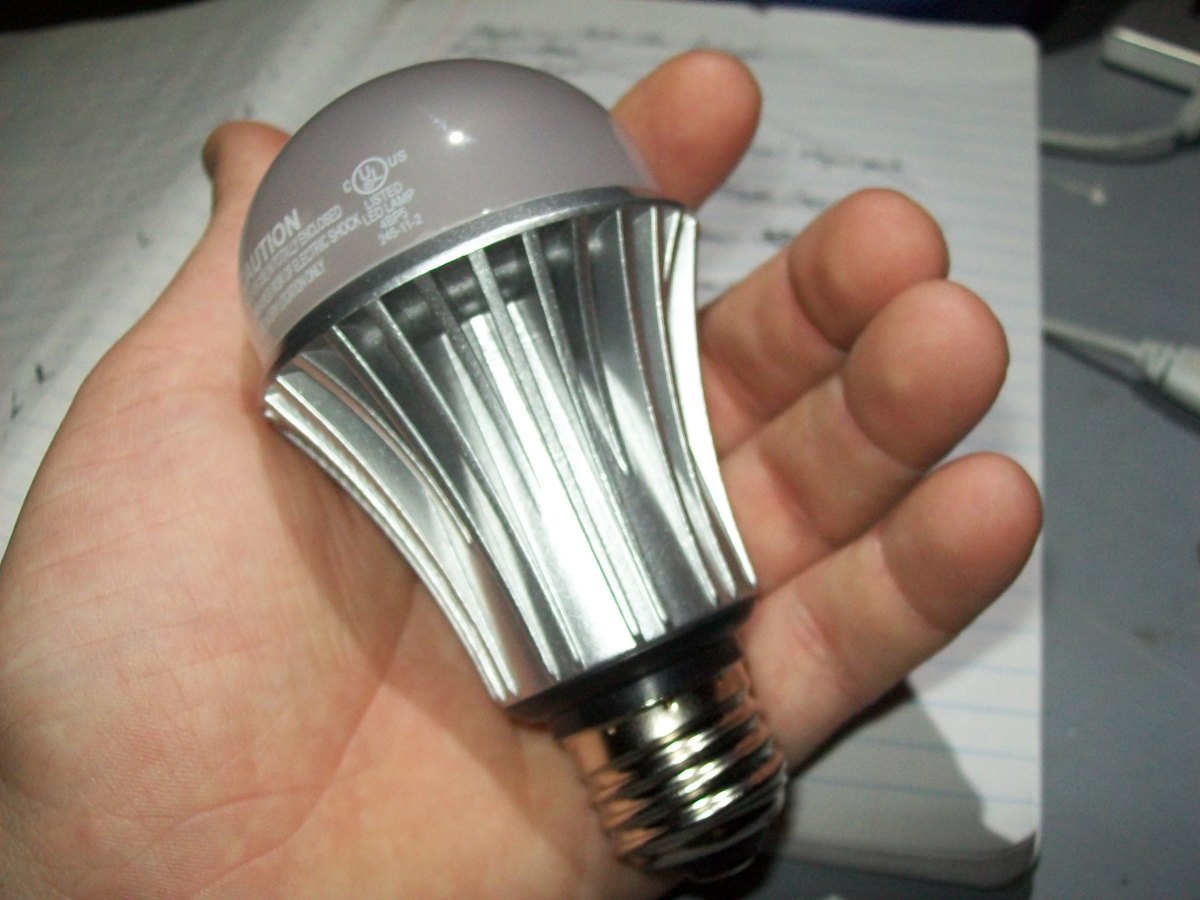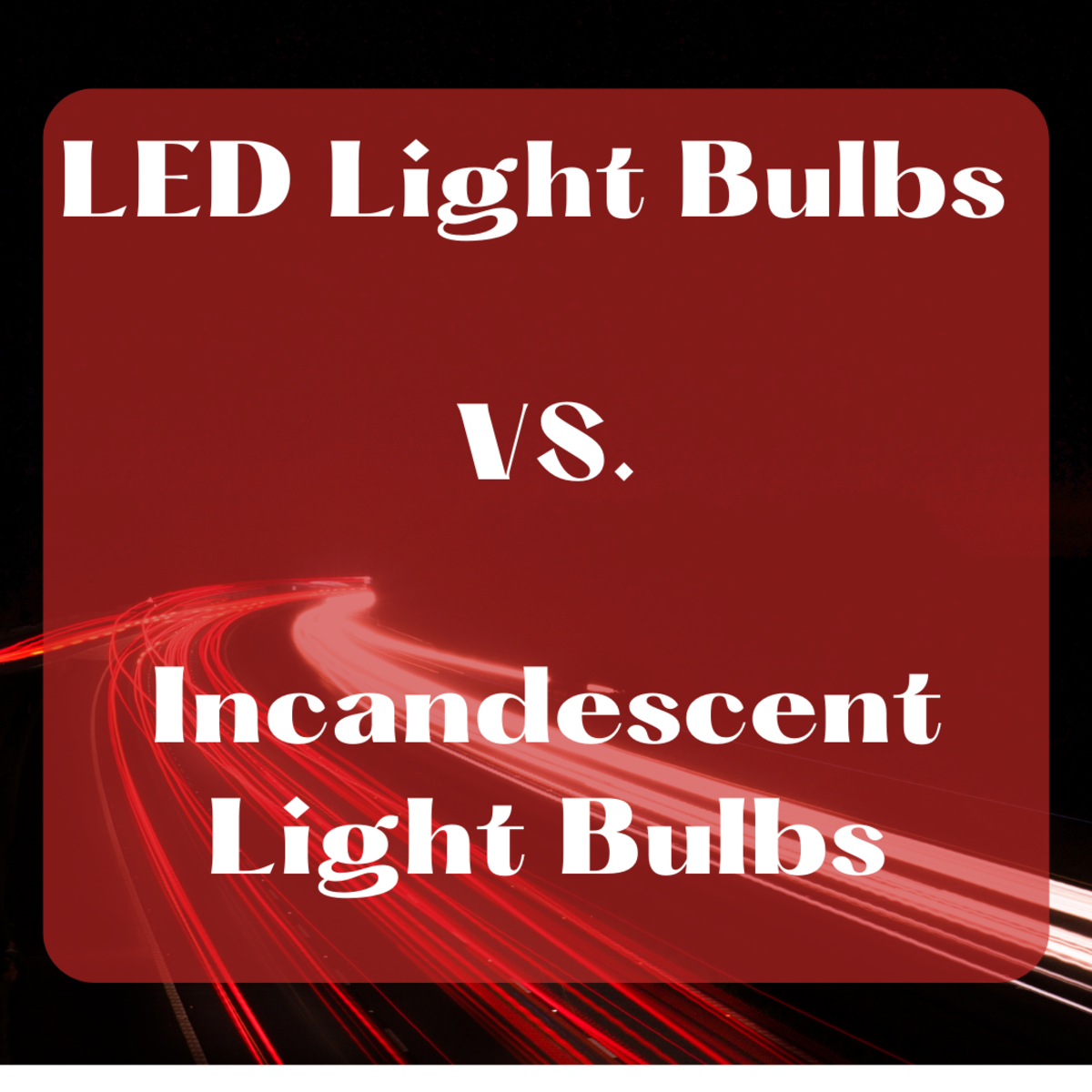- HubPages»
- Home and Garden»
- Home Improvement»
- Lamps & Interior Lighting Improvements
Compare LED and CFL Light Bulbs
How CFL and LED Bulbs are Different
Whether you use five bulbs or a dozen or two, many of us are in need of more information about the new bulbs that are now on the market. The Edison incandescent style used a much higher wattage, got hot to the touch and were less economical compared to the modern CFL and LED bulbs.
As the old light bulbs are phasing out, we need to familiarize ourselves with the variety of bulbs now at the stores to bring light to our homes. Bulbs that are not designed for dimming should not be placed in fixtures that have a dimmer switch. Also, the type of CFLs or LEDs being used with a dimmer switch need to be a dimmable version. Be sure the dimmer switch and light bulbs are compatible.
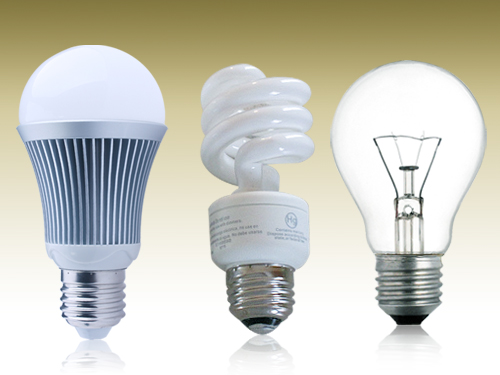
CFL Bulbs
If a compact fluorescent bulb (CFL) breaks, you practically have to call in a hazmat crew to clean up the hazardous waste and haul it away. Any amount of mercury is highly poisonous and CFL bulbs contain somewhere between 2.3 milligrams and 5 milligrams of mercury in each bulb. They are also covered with a coating that is toxic for people with sensitive skin.
Small defects in the brittle phosphor coating of the bulbs is common. The cracks can let UV light escape which may damage skin cells that can lead to cancer. Researchers at New York State University at Stony Brook saw bald spots in almost all the bulbs they collected from stores.
It is difficult for phosphor to curve into the twisted spiral shape without cracking. More recently, some CFL bulb brands have included a glass-like dome over the spiral. Although adding global shaped covers to the bulbs helps reduce exposure to ultra violet rays and more-so resembles the old incandescent bulbs, they still contain mercury, as do all fluorescent lighting. The mercury vapor emits UV rays from contact with the electrical current then absorbed by phosphors which emit light.
What light bulbs do you prefer?
Skin Sensitive and Broken CFL Bulbs
It is recommended to not remain within a few feet of the bulbs while they are on. Mercury is highly poisonous to the brain and nervous system and has quick-spreading vapors. If a CFL bulb were to break, it should not be swept or vacuumed, the heat or air conditioning needs to be turned off and the windows opened for thirty minutes to ventilate the room. The glass can be slid onto a piece of cardboard being sure to wear disposable gloves, and placed in a seal-able bag. The smaller pieces can be picked up using tape. The EPA has a strict step by step guideline on the clean-up procedure for broken CFL bulbs.
Since CFLs contain mercury, they are not to be thrown in the normal trash. Hardware stores such as Home Depot generally accept old CFL bulbs and broken ones may have to be taken to your local recycle center.
Comparing Light Bulb Review
Acronyms
Compact Fluorescent Light = CFL.
Light Emitting Diode = LED.
LED Bulbs
Phosphors are also used in LED lighting but are converted into light by a blue light source. There are no known dangers associated with the use of bulbs made from LED other than the ability to fool the body into believing it's daytime at night. This is caused by blue lighting. To maintain a good sleep cycle, we require bright days and dark nights which makes LED lighting great for daytime work. However, bright LED bulbs may cause difficulty sleeping at night if left on for lengthy periods during the evenings.
LED lighting does not have to cycle up or down when turned on or off, whereas CFL lighting does cycle. The process of frequent cycling degrades the longevity of CFL bulbs which is one reason they don't last as long as expected. Places where the light is frequently turned on and off may be good locations to use LED bulbs. Where the lighting stays on for extended periods may be places to use CFL bulbs you already have.
In locations that generally attract bugs due to the ultra violet rays, LED bulbs may be more practical. Although they get warm, these bulbs stay cooler and do not get hot. The heat dissipates from metal heat sinks located at the base that fan the heat from the light source. The cooling element also helps to assure the longevity of the bulb.
How LED Lighting Works
Economy and Purpose
CFL and incandescent bulbs give light in all directions. LED bulbs initially gave light in only one direction, was not well dispersed and caused by matching the snow-cone shape. The manufacturers have addressed this problem and have brought improved models to the market.
To conserve on the initial expense of the bulb and energy use, an output of 40 watts for an LED bulb is all that is needed in many areas of the home. Choices by color temperatures are offered as well. For example there are warmer yellows and cooler whites. The warmer tones are more consistent with incandescent and CFL lighting.
Economical
The declining price in LED bulbs is helping to make them more affordable for the general population. The manufacturers have been tweaking to improve how the bulbs function for a number of years now. LEDs are much healthier than CFLs and the ratio of watts to hours of use is very economical in comparison. The longevity of LED bulbs also extends beyond the life expectancy of other forms of bulbs.
CFL bulbs are similar to office lighting in that they are fluorescent. Although they can be exchanged when buying new bulbs at participating hardware and department stores, eventually the mercury will end up in land fills. The possibility of it going in the ground and then into water is a concern.
The American Ophthalmology Association has stated they know of no cases where eyes have been damaged by exposure to LED lighting. LEDs illuminate using concentrated streams of light and British scientists say that when it hits the eye it has the potential to burn the retina. When using LEDs in normal terms, they should not pose an issue. The light rays from incandescents are diffused before reaching the eye.
The U.S. manufacturing of 100 watt Incandescent bulbs began to be illegal in 2012. In 2013 it is illegal to produce 75 watt bulbs and again in 2014 the 60 watt, which has been the bulk of sales. Incandescent light bulbs will no longer be available in 2015.
It may be helpful to have an idea of what you want out of your light bulbs before you shop for them. Consider the purpose of each bulb, what the intended use is. How many watts are best in the particular locations throughout your home. Would cool, warm, bright or dim be most effective to serve the purpose of the light.
Currently there are numerous brands of light bulbs on the market to choose from. To help make the selection process easier, the packaging on most light bulbs includes a description of the bulb and the conversion of watts in terms we are familiar with.

